The British Money & Medals Network publishes a journal covering events from all parts of numismatics. We were allowed to reproduce this interesting article offering three dealers the opportunity to tell the readers about their perspectives of the trade and to share their experiences. This is remarkable as the editors of the Money & Medals Network newsletter as well as many of their readers are not coming from the commercial part of numismatics, but from the world of scholars. But that’s the special role of Britain, where things are more relaxed when it comes to cooperation between archaeologists and coin dealers.
Paul Withers
Do you believe in predestination? I loved coins. I badgered relatives, and my parent’s friends. Cupboards were searched and plundered. I liked my coins shiny, so all were polished and were stored in a tin with jubilee portraits of George V and Queen Mary on the lid. I was, I hasten to add, only four years old, and I don’t think I ruined anything of quality.
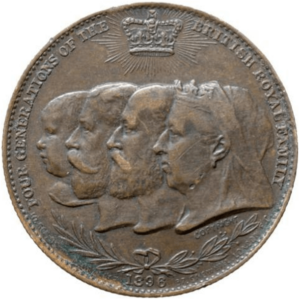
Aged 6, staying with my widowed great aunt Clara, she found an 1897 medalet depicting four monarchs, a real treasure. I couldn’t be parted from it. I even took it with me to the outdoor privy. Trying to admire it in the dark and pee at the same time, it fell. Splash! Devastated, sobbing, I fished it out and scrubbed my arm almost raw, and the medal got a special clean with harpic!
Aged 15, I was good at science, but wanted to earn money so didn’t stay in school, going to work in the metallurgical laboratory of a steel works. Three years later, earning little, I had only really enjoyed the brief time when I was seconded to the research department, so decided that education was the way forward after all, so ‘O’ and ‘A’ levels at night school whilst I tried out life as a student teacher. Five years later I was an impecunious teacher, and collecting coins at a time when people were checking their change and collecting date runs. I attended a meeting of the newly-formed coin club. People looked at my album and were impressed. I explained that these were duplicates. People thrust money at me. I had become a part time dealer.
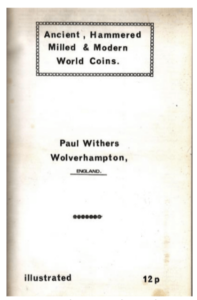
Fast forward a few years and I was married, and although I loved teaching I was earning so little that had our infant son been of school age, he would have been eligible for free school meals! I had a Sunday morning pitch in Cutler Street market, London. This produced as much income as a week of teaching. One Christmas we went to Denmark, my wife’s home, accounts in hand, to discover that my hobby was subsidizing my job. I left teaching. Fifty years ago dealers sent out printed lists. I had a 1930s typewriter bought from auction for 30 shillings. £3 bought an ex-army electric duplicator. I wrote short articles and sent out sales lists by post.

What makes a professional numismatist these days? Firstly, you have to keep up to date with modern technology and move with the times, learning new skills when necessary. My wife and I have had a good deal of experience over the past half century, becoming, out of necessity, Jacks and Jills of all trades, from coin photography to specialist, multilingual typesetting, and printing. When the duplicator wore out £25 bought us a small, second-hand offset printing machine. A few years on we had the same electronic type-setting equipment as our local newspaper. There were only four such IBM machines in the entire county of Staffordshire. Then computers arrived. We were the first coin dealer in the UK to use one.
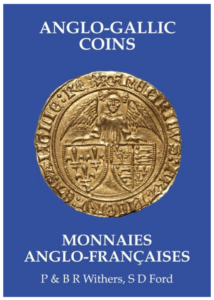
We bought a bigger and better machine and began printing sales lists for other dealers, as well as the ONS Newsletter, The Medal, and then, our own books. This involved learning skills such as editing and specialist typesetting. We even contemplated bookbinding!
Being a numismatic publisher is like being a detective who applies the ABC principle. What’s that? Assume Nothing. Believe Nothing. Challenge and check everything. Do that well and the book stands a reasonable chance of being good, providing you read and understand the previous literature on the subject. That of course, implies that you have a good library – and we have one of the best in Wales, all thanks to Howard Linecar, and Peter Seaby who encouraged me 45 years ago.

Frances Simmons
Reader, I married him… Howard Simmons was an avid coin collector turned dealer so that was how I became interested in the medal, accompanying him to fairs and auctions; two keen collectors out hunting every weekend. The hobby became a business in 1982. We travelled the world, buying and selling at major fairs and local numismatic society meetings, from the US to France and the Low Countries, and even to Hong Kong and Singapore in those early years. We had to negotiate our way through foreign and UK customs with endless paperwork all pre internet. A four hour wait for a customs stamp on a form at Dover after a rough ferry crossing, squished between juggernauts, was pretty normal.
Somehow I ended up doing all the admin and was grateful when the global scheme for VAT accounting came in. I was also organising the London Coin Fair at the Cumberland Hotel, subsequently at the Holiday Inn Bloomsbury. I continued to do this with Howard’s help until 2010 when the show was sold to Mike & Lu Veissid.
Our first premises were in Grays Antique Market off Oxford Street. It was a tiny space, barely 3m. x 2m. chock-full of boxes and display cabinets, with a door on to the street, sunshine, dust and the cold drifting in along with dealers and collectors from all over the world, some of whom are still with us after nearly 40 years. We never knew what we were going to be offered or what would sell or when. At one time masonic jewels became hot fashion items so we’d purchase as many as we could in London, and sell them to visiting Italian dealers. One beautifully intricate piece, wasn’t of interest to them. It was from the Coach and Coach Harness Makers Company, City of London, a silver gilt and enamel master’s badge. Unsold, we took it off the shelf, put it in a box and when the opportunity arose, added more and more livery company jewels until we had a collection. Years later when we’d moved to the Lamb’s Conduit Street gallery, we sold the collection to the Worshipful Company of Cutlers to complement their own holding. This type of collecting while dealing became part of our method over the years. We’d find something good, rare and well-designed but not have an immediate customer for it. The collecting instinct kicks in. Time passes, markets like China, India and Asia open up and suddenly there are new customers, pleased to have found you.
Through BAMS, I’d become very interested in the contemporary medal and our Holborn gallery space gave us the opportunity to hold specialist exhibitions by practising medallists and jewellers, such as Nicola Moss, Danuta Solowiej, Marian Fountain, Ron Dutton, Jane McAdam Freud, and Ian Rank-Broadley. We also hosted the BAMS Student Medal Project exhibition and held special Christmas shows of sculptural jewellery and medals.
There’s always a tension between being a collector and a dealer; you have to sell for commercial reasons. Which is why, sadly, we don’t have any Japanese obans, Gupta lion slayers, colonial US coins or Korean won in our stock now.
It’s also fun and a privilege to help others build their collections, whether institutions like the British Museum or the Bank of Jamaica, or private individuals. We disperse collections through our mailbid auctions or by direct purchase. Most notable were the private sale of a series of medals by Ludwig Gies and other early 20th century German medallists, the auctions of the Bagwell-Purefoy and Shepherd complete BAMS collections, the Chambers collection of tokens and the Macmillan Scottish tokens. We’re still receiving and making collections for sale and I expect Howard and I will be dealing for many more years, albeit at a gentler pace.
A Lifetime Passion in the Coin Trade – John Philpotts of Silbury Coins Ltd
My introduction to coins began at the very young age of five. I remember going to a beach in North Wales (we then lived in Lancashire) with my father and his metal detector. The first ‘signal’ and subsequent hole were exciting but then as any five year old with the attention span of, well, a five year old would I began searching for crabs and soon wanted to go home. My father persisted though and at the age of eight bought me my first metal detector. Many years of exciting searching followed and we’ve been fortunate enough to have been involved in unearthing some wonderful treasures and hoards over the years, we both still go metal detecting today although Dad, now retired is out most days and I, with a 4-month old son cannot remember the last time I switched my machine on.
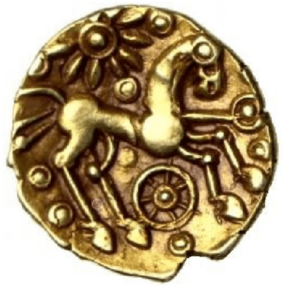
Developing a love for coin collecting through metal detecting it wasn’t until my late teens that I first sold a coin, and was intrigued by the world which that coin then entered. Before long I found myself selling coins for friends and other members at our local Historical & Metal Detecting club. After a few years and having always had an entrepreneurial flair I decided to shelve my career as an electrician and have a go at being a coin dealer, something which I had quickly started to thoroughly enjoy. That was some 18 years ago and I still enjoy getting to the office on a Monday morning (ok well not always but generally!) I’ve now run Silbury Coins for 10 years, we deal in coins and artefacts from the Bronze Age to Victorian era, a wide span which certainly keeps us busy. Personally I specialise in the British Iron Age, Anglo Saxon and Medieval periods. I love the simplistic nature of the Iron Age coins and the art which goes with it, …
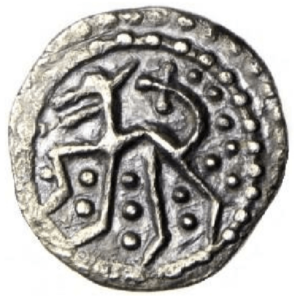
… paralleled in the early Anglo Saxon coinage before the introduction of the standardised penny.
I feel proud to have been with Silbury Coins since its creation in 2010 and do my best to ensure that new and old customers receive the same high level of service that I would want to receive myself. I often see people receiving lower quality service, both in the numismatic trade and outside of, which I think there is no excuse for, everyone deserves to be treated fairly.

Since my introduction to the coin world I have only seen an increase in values, albeit at varied rates, something which I think fairly reflects the remarkable objects which we are lucky enough to handle each day. A Roman coin, nearly 1700 years old in exceptional condition for £50 or British Anglo Saxon art at its best for £390, surely that must be good value for money?
Alongside Silbury Coins I also run the Bloomsbury & Harrogate Coin fairs, the first being a regular event held in London and the latter an annual event spread over 3 days. I’ve done this for 8 years now and get much enjoyment out of providing a safe, friendly environment for new and experienced collectors to come together and immerse themselves in their hobby, passion or profession for the day.
The current market is rather different to anything any of us have ever know before. With the worldwide spread of Covid-19 and ensuing lockdown measures taken around the globe there is no chance to travel or meet face to face at the moment. Dealers and auction houses are having to adapt to doing business solely online and, now that the dust has settled and we are getting used to this new way of business, those companies who have adapted are continuing to trade. Items are sent by post or securely stored and due to the fact that things cannot be sold elsewhere more is available online than ever before. I appreciate that there’s nothing quite like viewing a coin in hand but Silbury Coins and others have always offered a 14-day returns policy which means you can buy a coin, receive it via insured post, closely inspect it and then send it back for a full refund if you are not happy. Selling happens in the same way, insured post, offer, decision, coin back or funds transferred. The way in which we do business has changed but the fundamentals which we value have not.
So while we all have more time at home I’d recommend getting those collections out and spending time on your pastime, be it identifying gaps then searching the website for those items or choosing coins to move on, there has been no better time to focus on coins and we, the dealers are still open for business! You can view Silbury Coins extensive stock and easy to navigate website here or if you’d prefer call them for a chat on 01242 898107 or write an email.
This article was first published by the Money & Medals Network. You can subscribe to the Money & Medals Newsletter free of charge on the MMN website.
Would you like to know how coin dealers in other counties experience Covid-19? Click here to read about the impressions of a Japanese coin dealer.




